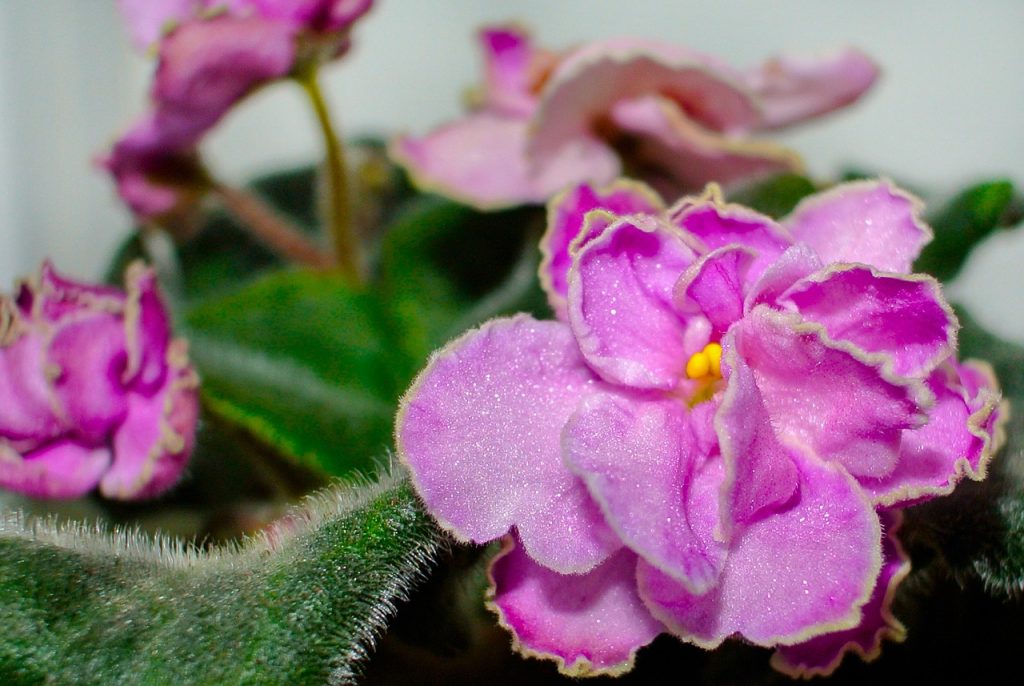Among the myriad of indoor plants that capture the attention of gardening enthusiasts, African violets stand out due to their stunning appearance and relatively easy care requirements. With their lush foliage and vibrant blooms, these plants not only beautify spaces but also bring a touch of elegance and tranquility to any indoor setting. Whether you are a seasoned gardener or a beginner, African violets offer a rewarding experience that combines aesthetics and horticultural knowledge.
The Enchanting World of African Violets
African violets, scientifically known as Saintpaulia, are native to the lush, warm climates of Eastern Africa, particularly in Tanzania and Kenya. These plants belong to the family Gesneriaceae and have been a staple in indoor gardening since their discovery in the late 19th century. Their popularity soared due to their ability to flower year-round and their adaptability to indoor conditions.

Appearance and Varieties
African violets are characterized by their rosettes of dark green, velvety leaves which provide a striking contrast to the array of colorful blooms they produce. The flowers come in a spectrum of colors including purple, pink, white, and blue, often with striking patterns and edges.
There are numerous varieties of African violets, each offering unique features. Some popular types include:
- Standard African Violets: These are the most common type, with blooms that can reach up to two inches in diameter.
- Miniature African Violets: These are perfect for small spaces, with leaves and blooms that are significantly smaller than the standard varieties.
- Trailing African Violets: Known for their ability to grow and spread, these varieties are ideal for hanging baskets and can produce abundant blooms.
Creating the Perfect Environment for African Violets
While violets are relatively easy to care for, providing them with the right conditions is crucial for their growth and blooming.
Lighting Needs
African violets thrive in bright, indirect light. Direct sunlight can scorch their leaves, while insufficient light will hinder blooming. Placing them near a north or east-facing window is ideal. If natural light is inadequate, consider using fluorescent lights to supplement their lighting needs.
Soil and Potting Requirements
These plants require light, well-draining soil to prevent root rot. A specialized African violet potting mix is recommended, or you can create your own by combining peat moss, vermiculite, and perlite. Ensure that pots have drainage holes to avoid waterlogging.
Watering Techniques
It prefers consistent moisture but is susceptible to overwatering. Water them when the top inch of the soil feels dry to the touch. Use lukewarm water and avoid getting water on the leaves, as this can cause spotting. Bottom watering is an effective method to prevent leaf damage.
Temperature and Humidity
These plants thrive in temperatures between 65-75°F (18-24°C). They also prefer higher humidity levels, making them suitable for bathroom displays or alongside a humidifier. Avoid exposing them to drafts or sudden temperature changes, which can stress the plant.
Planting and Propagation
Propagating African can be a rewarding process, allowing gardeners to expand their collection or share plants with others.
Propagation by Leaf Cuttings
One of the simplest methods of propagation is through leaf cuttings. Select a healthy leaf, cut it with a sharp knife, and place it in water or directly into a potting mix. Keep the soil moist and place the cutting in a warm, bright location. New plantlets will emerge from the base of the leaf in a few weeks.
Repotting African Violets
African violets should be repotted every 6-12 months to provide them with fresh soil and prevent root binding. Choose a pot that is only slightly larger than the current one to avoid excessive soil which can retain too much moisture.

Seasonal Care for Year-Round Bloom
To keep African violets blooming throughout the year, adjust their care slightly with the changing seasons.
Spring and Summer Care
During the growing season, Violets benefit from regular feeding with a balanced, water-soluble fertilizer. Fertilize every 4-6 weeks to encourage lush growth and vibrant blooms.
Fall and Winter Adjustments
As natural light diminishes in fall and winter, consider adding supplemental lighting to maintain flowering. Reduce watering slightly, as plants will grow more slowly in cooler temperatures.
Common Problems and Solutions
Despite their resilience, It can encounter several issues. Here’s how to address common problems:
Pests and Diseases
African violets are susceptible to pests like aphids and spider mites. Regularly inspect the leaves and use insecticidal soap or neem oil as a treatment. Fungal diseases can be avoided by ensuring proper air circulation and avoiding water on the leaves.
Leaf Yellowing
Yellowing leaves may indicate overwatering or nutrient deficiency. Adjust watering practices and consider feeding the plant with a balanced fertilizer to restore vigor.
Lack of Blooms
If your African violet is not blooming, ensure it receives adequate light. Adjust its placement or provide artificial lighting if necessary. Regular fertilization can also encourage flowering.

Practical Uses and Benefits
African violets are more than just decorative plants. They can improve indoor air quality by absorbing toxins and releasing oxygen. Additionally, their vibrant flowers can enhance mood and reduce stress, making them a valuable addition to any home or office environment.
Frequently Asked Questions
Water African violets when the top inch of soil is dry. This usually translates to once a week, but frequency can vary based on environmental conditions.
Violets are best suited for indoor cultivation as they require specific temperature and humidity conditions that are difficult to maintain outdoors.
Leaf curling can result from low humidity or exposure to drafts. Increasing humidity and ensuring the plant is not in a drafty location can help solve this issue.
African violets are non-toxic to pets, making them a safe choice for households with animals.